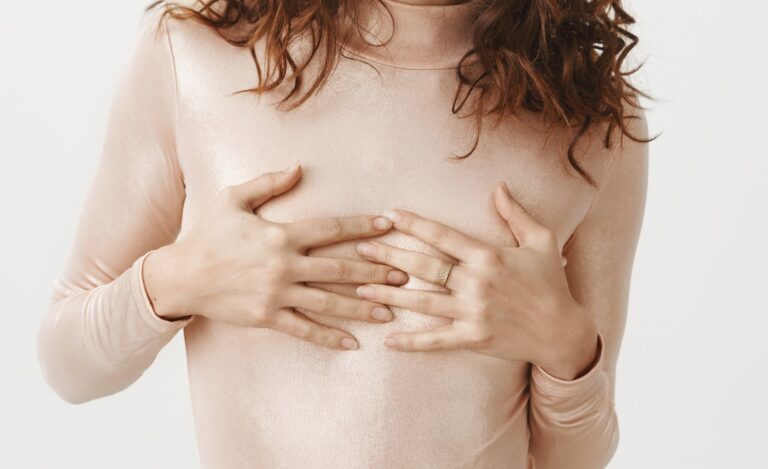Is Sabudana Good For Gestational Diabetes? Know what the latest reaserch says!

Sabudana (tapioca pearls) khichdi is a traditional Indian dish made from soaked tapioca pearls, typically flavored with various ingredients like spices, peanuts, and sometimes vegetables. It is a starchy food, and people with gestational diabetes often need to manage their carbohydrate intake to control their blood sugar levels. In this article we will learn if you can eat sabudana khichdi in gestational diabetes or not in detail.

How gestational diabetes impacts mother and baby?
Gestational diabetes can significantly impact pregnancy outcomes. It’s essential for expectant mothers to understand the potential consequences of unmanaged gestational diabetes to ensure a healthy pregnancy.
Maternal Complications:
- Preeclampsia and high blood pressure are potential complications of uncontrolled gestational diabetes.
- Unmanaged gestational diabetes can increase the mother’s risk of developing type 2 diabetes later in life.
- Cesarean section (C-section) delivery might be required due to concerns about the baby’s size or health.

Fetal Complications:
- Uncontrolled gestational diabetes can lead to macrosomia (excessive birth weight) in the baby.
- It can result in respiratory distress syndrome for the newborn.
- Babies born to mothers with unmanaged gestational diabetes may experience low blood sugar (hypoglycemia) after birth.
- They have an increased risk of developing obesity and type 2 diabetes in later life.
Gestational diabetes can have significant implications for both the mother and the baby’s health during pregnancy. However, with appropriate care, including diet, exercise, and medical intervention if needed, these risks can be reduced, leading to a healthier pregnancy outcome.
Is sabudana good for diabetic mothers?
Here are a few things to consider when deciding whether to eat sabudana khichdi in gestational diabetes:
- Portion size: If you decide to consume sabudana khichdi, it’s essential to pay attention to portion sizes. Eating smaller portions may help manage your carbohydrate intake and control blood sugar levels.
- Glycemic index: Sabudana has a high glycemic index, which means it can cause a rapid spike in blood sugar levels. It may be better to consume it in moderation and pair it with protein and fiber-rich foods to slow down the absorption of carbohydrates.
- Preparation methods: How sabudana khichdi is prepared can impact its impact on blood sugar levels. Cooking it with excessive oil or sugar can add extra calories and carbohydrates. Consider healthier cooking methods, such as baking or air frying, to reduce added fats.

- Monitor your blood sugar: Regularly check your blood sugar levels as advised by your healthcare provider. This will help you understand how different foods, including sabudana khichdi, affect your blood sugar.
- Dietary balance: Focus on a balanced diet that includes a variety of foods, such as lean proteins, non-starchy vegetables, whole grains, and healthy fats. This can help you better manage your blood sugar levels during pregnancy.
- Consult a healthcare professional: Your healthcare team can provide you with a personalized meal plan and recommendations based on your specific needs and blood sugar levels.
Sabudana glycemic index
Sabudana, or tapioca pearls, has a high glycemic index (GI) of approximately 70-80. Foods with high GI values are quickly digested and absorbed, causing a rapid spike in blood sugar levels. This makes sabudana a food that people with diabetes should consume in moderation and pair with other low-GI foods to help stabilize blood sugar levels.
It is commonly used in dishes like sabudana khichdi and sabudana vada, which are popular in certain regional cuisines. People with diabetes should be cautious about their portion sizes and monitor their blood sugar levels when consuming sabudana-based dishes.

Sabudana for diabetes : Simple sabudana khichdi recipe for diabetic mother
Here’s a simple recipe for Sabudana Khichdi:
Ingredients:
- 1 cup sabudana (tapioca pearls)
- 2-3 tablespoons peanut oil
- 1 teaspoon cumin seeds
- 2-3 green chilies, chopped (adjust to your spice preference)
- 1/2 cup roasted and coarsely crushed peanuts
- 2 medium-sized boiled potatoes, peeled and chopped into cubes
- 1/2 teaspoon sugar (optional)
- Salt to taste
- Freshly squeezed lemon juice (from 1-2 lemons)
- Fresh cilantro leaves for garnish
Instructions:
- Start by rinsing the sabudana under running water until it’s clean. Then, soak it in enough water to cover the pearls and let it sit for at least 3-4 hours or overnight.
- After soaking, drain the excess water and set the sabudana aside.
- In a pan, heat the peanut oil. Add cumin seeds and chopped green chilies. Sauté for a minute until the cumin seeds start to splutter.
- Add the soaked and drained sabudana to the pan. Stir well to combine.
- Cook on medium heat, stirring occasionally, for about 8-10 minutes or until the sabudana becomes translucent and no longer feels raw. Keep stirring to prevent sticking to the pan.
- Add the roasted and crushed peanuts, chopped boiled potatoes, sugar (if using), and salt. Mix everything together and continue cooking for another 2-3 minutes.
- Turn off the heat and squeeze fresh lemon juice over the khichdi. Mix well.
- Garnish with fresh cilantro leaves.
- Serve the Sabudana Khichdi hot and enjoy!
Note: Adjust the spiciness by adding or reducing the green chilies according to your taste. You can also add grated coconut or some sugar for extra flavor.
Managing Blood Sugar Through Diet
Yes, sabudana khichdi in gestational diabetes can be one of the best option.
According to several reserache’s, Managing blood sugar through diet is a fundamental aspect of controlling conditions like diabetes and gestational diabetes. A balanced and mindful diet can help stabilize blood glucose levels, promoting better overall health.

Here,we explore key strategies for managing blood sugar through dietary choices:
- Carbohydrate Management:
- Understand the impact of carbohydrates on blood sugar.
- Choose complex carbohydrates like whole grains, legumes, and vegetables.
- Monitor portion sizes to control carbohydrate intake.
- Fiber-Rich Foods:
- Incorporate high-fiber foods like fruits, vegetables, and whole grains.
- Fiber helps slow the absorption of sugar, preventing rapid spikes in blood glucose.
- Balanced Meals:
- Create balanced meals that include lean proteins, healthy fats, and carbohydrates.
- This balance provides sustained energy and better blood sugar control.
- Glycemic Index Awareness:
- Be aware of the glycemic index (GI) of foods.
- Choose lower-GI foods to prevent rapid blood sugar fluctuations.
- Sugar and Sweeteners:
- Minimize added sugars and sugary beverages in your diet.
- Consider natural sweeteners like stevia or use sugar substitutes in moderation.
- Regular Eating Schedule:
- Stick to a consistent eating schedule.
- This can help regulate blood sugar levels throughout the day.
- Portion Control:
- Practice portion control to avoid overeating.
- Smaller, frequent meals may be beneficial.
- Snacking Wisely:
- Choose healthy snacks like nuts, yogurt, or fruits to prevent blood sugar drops.
- Avoid high-sugar or highly processed snacks.

- Stay Hydrated:
- Drink plenty of water to maintain good overall health.
- Dehydration can affect blood sugar levels.
- Consult a Registered Dietitian:
- Seek guidance from a healthcare professional or dietitian.
- They can create a personalized meal plan based on your specific needs.
- Monitor Blood Sugar:
- Regularly monitor blood glucose levels, as advised by your healthcare provider.
- Adjust your diet based on your results.
- Meal Planning:
- Plan meals ahead of time to ensure a balanced and blood sugar-friendly diet.
- Include a variety of foods to meet nutritional needs.
By following these dietary strategies and working closely with healthcare professionals, individuals can effectively manage blood sugar levels and improve their overall well-being. A well-thought-out diet can be a powerful tool in achieving better control of blood sugar and preventing complications associated with diabetes.
Conclusion
If you have gestational diabetes, it’s crucial to be mindful of your diet to manage blood sugar levels effectively. Sabudana khichdi in gestational diabetes is one of the option for diabetic womens. It is a traditional Indian dish made from tapioca pearls, is high in carbohydrates and can cause rapid spikes in blood sugar levels. sabudana khichdi in gestational diabetes
It’s advisable to consume sabudana khichdi in moderation and with caution. When you do choose to include it in your diet, pair it with proteins and fiber-rich foods to help stabilize blood sugar. Ensure portion control and monitor your blood sugar levels regularly. However, it’s always best to consult with a healthcare professional or a registered dietitian to create a personalized meal plan.
FAQ’S
- What is gestational diabetes?
Gestational diabetes is a type of diabetes that develops during pregnancy, affecting blood sugar levels.
- How can I manage gestational diabetes?
Managing gestational diabetes typically involves dietary changes, regular monitoring, and sometimes medication as recommended by your healthcare provider.
- What are the potential risks of unmanaged gestational diabetes?
Unmanaged gestational diabetes can lead to complications for both the mother and the baby, including preeclampsia, high birth weight, and an increased risk of type 2 diabetes.















+ There are no comments
Add yours